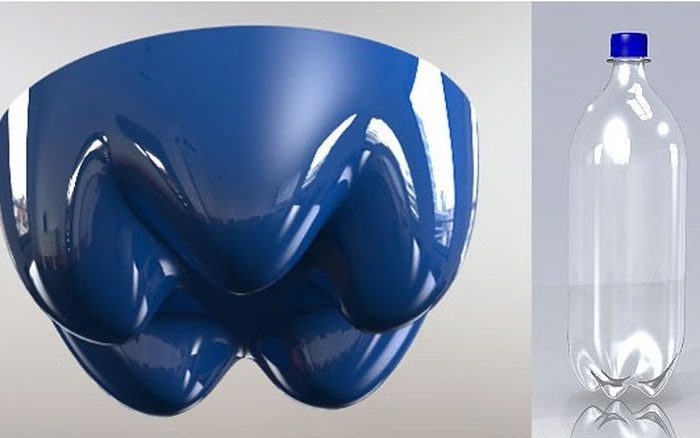The five-petal flower design at the bottom of soft drink and carbonated water bottles helps distribute pressure, increase rigidity, and support the stability of the bottle.
Many people often wonder why the bottom of drink bottles, especially soft drinks, has a five-petal flower shape. Some believe that this design aims to hold less liquid and deceive consumers’ perceptions. However, in reality, each bottle has specific capacity standards, and the filling of liquids must fall within the prescribed tolerances. Therefore, this reasoning is not valid.

Carbonated drink bottles typically have a concave bottom rather than a flat one like regular bottled water.
Generally, the five-petal flower design at the bottom of bottles is primarily used for carbonated beverages. Shaking carbonated drinks during transportation promotes the breakdown of carbonate, creating a large volume of bubbles containing carbon dioxide.
This increases the gas volume in the beverage, creating high pressure that poses a risk of damaging or exploding the bottle. The flower-shaped bottom design can effectively distribute pressure, avoiding the risk of bottle explosions.
Another advantage of the five-petal flower bottom design is that it increases rigidity, preventing the bottles from tipping over when stacked together. For example, supermarket shelves filled with flat-bottomed carbonated drinks can easily topple like a row of dominoes if someone accidentally bumps into the shelf or is careless while taking or placing a drink. However, the five-petal flower bottom provides a greater grip on the shelf, so if one bottle falls, it will not cause other bottles to topple, thereby minimizing damage and increasing safety.
When pouring carbonated drinks, manufacturers must pump carbon dioxide into the bottle, which needs to withstand about 4 atm (a pressure measurement unit). PET plastic used for soft drink bottles does not have the rigidity of glass bottles, so the bottom must be designed with a concave shape and elongated rib structure, helping to evenly distribute pressure at the bottom of the bottle, ensuring stability after being filled with carbonated beverages.


















































